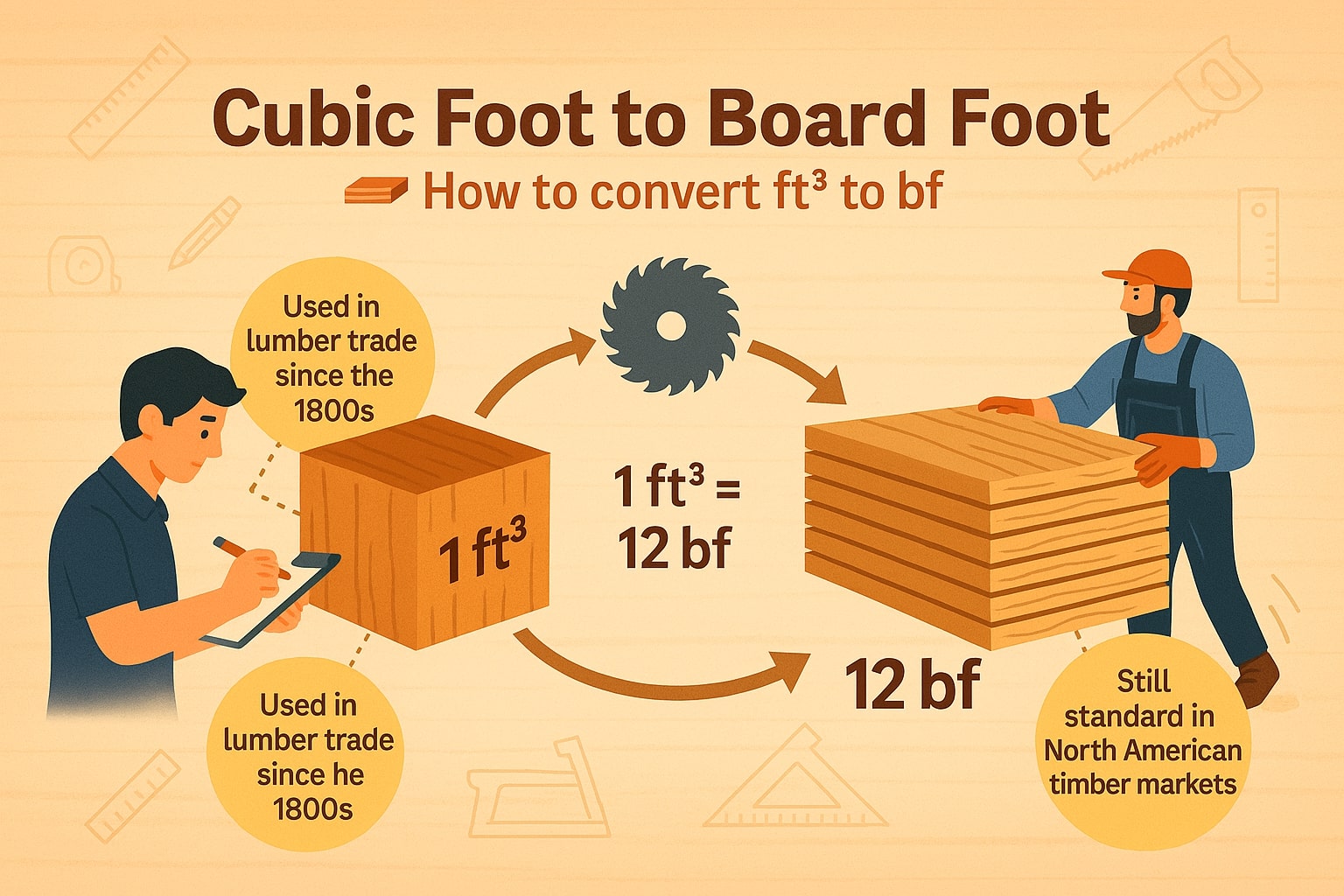Cubic Foot to Board Foot – How to convert ft³ to bf
Looking for a quick way to turn cubic foot to board foot measurements into something you can actually use? Whether you’re planning a project, buying lumber, or simply curious, Jetcalculator has you covered with a fast, reliable conversion tool. This guide will break down the math, share some interesting facts about these two units, and even take you back to a fascinating moment in history that made one of them a global standard.

What is a cubic foot (ft³)?
A cubic foot (ft³) is a volume measurement. Picture a cube that’s one foot on each side – that’s 1 cubic foot. It’s often used for things like storage space, soil, concrete, and liquids. One cubic foot equals 1,728 cubic inches or 28.3168 liters.
Although cubic feet are common in the United States, most other parts of the world prefer liters or cubic meters. Still, it’s essential when dealing with large objects, from home appliances to piles of raw materials.
What is a board foot (bf)?
A board foot (bf) measures lumber volume. One board foot equals a board that’s 1 inch thick, 12 inches wide, and 12 inches long – 144 cubic inches in total. Lumber yards and builders use it to price and plan wood.
The unit became popular in the 19th century because it standardized the lumber trade. With one cubic foot equaling 12 board feet, the conversion is simple once you know the trick.
How to convert cubic foot to board foot
The formula is straightforward:
1 cubic foot = 12 board feet
To convert:
Board Feet (bf) = Cubic Feet (ft³) × 12
Example: If you have 5 cubic feet of wood:
5 ft³ × 12 = 60 bf
You can skip the math and use our Volume Converter or explore other handy Conversion tools to get results instantly.
Do you know?
-
The world’s largest ice cream sundae, verified by Guinness World Records, took up more than 900 cubic feet – about the space of a one-car garage, but entirely filled with ice cream.
-
NASA measured the Apollo Lunar Module’s cabin at just 235 cubic feet, which two astronauts had to share during their missions to the Moon.
-
The famous redwood tree “Hyperion,” the tallest living tree, would yield over 500,000 board feet of lumber if it were ever cut (it’s protected, so no risk of that happening).
-
Before the board foot became the standard, lumber was often sold by the “cord,” leading to chaotic deals because boards came in wildly different thicknesses.
The Deal That Changed Lumber Forever
In the late 1800s, as the United States boomed with new railroads and cities, lumber was one of the most valuable commodities. But trading wood was a nightmare – every mill, region, and merchant used different measurements. Prices were inconsistent, and builders often overpaid.
That changed when sawmill owners and builders pushed for a single, easy-to-use unit. The board foot became the solution, championed in trade journals like American Lumberman. It gave lumber yards a way to standardize sales and made shipping by rail far easier. By the early 20th century, nearly every lumber deal in North America was done in board feet – a practice that still defines the industry today.
.jpg)
Wrapping It Up
Converting cubic foot to board foot is as easy as multiplying by 12. Whether you’re buying wood for a project, studying measurements, or managing materials, this simple conversion saves time and keeps things accurate.
For fast, no-hassle results, use our Volume Converter or explore other Conversion tools to make every calculation quick and precise.

